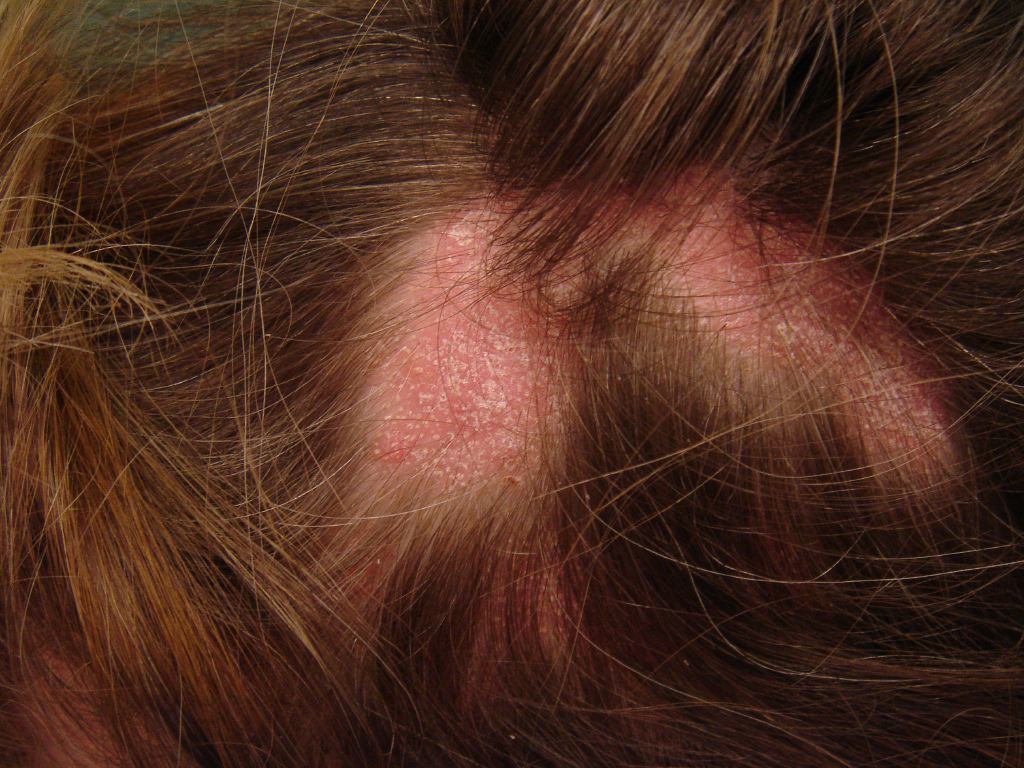[1]
László FG. Graham-Little-Piccardi-Lasseur syndrome: case report and review of the syndrome in men. International journal of dermatology. 2014 Aug:53(8):1019-22. doi: 10.1111/j.1365-4632.2012.05672.x. Epub 2013 Mar 14
[PubMed PMID: 23489018]
Level 3 (low-level) evidence
[2]
Soares VC, Mulinari-Brenner F, Souza TE. Lichen planopilaris epidemiology: a retrospective study of 80 cases. Anais brasileiros de dermatologia. 2015 Sep-Oct:90(5):666-70. doi: 10.1590/abd1806-4841.20153923. Epub
[PubMed PMID: 26560212]
Level 2 (mid-level) evidence
[3]
Valesky EM, Maier MD, Kaufmann R, Zöller N, Meissner M. Single-center analysis of patients with frontal fibrosing alopecia: evidence for hypothyroidism and a good quality of life. The Journal of international medical research. 2019 Feb:47(2):653-661. doi: 10.1177/0300060518807335. Epub 2018 Oct 31
[PubMed PMID: 30378444]
Level 2 (mid-level) evidence
[4]
Griffiths AAC, Sancho MI, Plaza AI. Piccardi-Lassueur-Graham-Little syndrome associated with frontal fibrosing alopecia. Anais brasileiros de dermatologia. 2017 Nov-Dec:92(6):867-869. doi: 10.1590/abd1806-4841.20176741. Epub
[PubMed PMID: 29364452]
[5]
Yorulmaz A, Artuz F, Er O, Guresci S. A case of Graham-Little-Piccardi-Lasseur syndrome. Dermatology online journal. 2015 Jun 16:21(6):. pii: 13030/qt7gj157xg. Epub 2015 Jun 16
[PubMed PMID: 26158366]
Level 3 (low-level) evidence
[6]
d'Ovidio R, Sgarra C, Conserva A, Angelotti UF, Erriquez R, Foti C. Alterated integrin expression in lichen planopilaris. Head & face medicine. 2007 Feb 8:3():11
[PubMed PMID: 17288588]
[7]
Assouly P, Reygagne P. Lichen planopilaris: update on diagnosis and treatment. Seminars in cutaneous medicine and surgery. 2009 Mar:28(1):3-10. doi: 10.1016/j.sder.2008.12.006. Epub
[PubMed PMID: 19341936]
[8]
Rodríguez-Bayona B, Ruchaud S, Rodríguez C, Linares M, Astola A, Ortiz M, Earnshaw WC, Valdivia MM. Autoantibodies against the chromosomal passenger protein INCENP found in a patient with Graham Little-Piccardi-Lassueur syndrome. Journal of autoimmune diseases. 2007 Jan 12:4():1. doi: 10.1186/1740-2557-4-1. Epub 2007 Jan 12
[PubMed PMID: 17222351]
[9]
Pai VV, Kikkeri NN, Sori T, Dinesh U. Graham-little piccardi lassueur syndrome: an unusual variant of follicular lichen planus. International journal of trichology. 2011 Jan:3(1):28-30. doi: 10.4103/0974-7753.82129. Epub
[PubMed PMID: 21769233]
[10]
Viglizzo G, Verrini A, Rongioletti F. Familial Lassueur-Graham-Little-Piccardi syndrome. Dermatology (Basel, Switzerland). 2004:208(2):142-4
[PubMed PMID: 15057005]
[11]
Yang CC, Khanna T, Sallee B, Christiano AM, Bordone LA. Tofacitinib for the treatment of lichen planopilaris: A case series. Dermatologic therapy. 2018 Nov:31(6):e12656. doi: 10.1111/dth.12656. Epub 2018 Sep 27
[PubMed PMID: 30264512]
Level 2 (mid-level) evidence
[12]
Samejima K,Platani M,Wolny M,Ogawa H,Vargiu G,Knight PJ,Peckham M,Earnshaw WC, The Inner Centromere Protein (INCENP) Coil Is a Single α-Helix (SAH) Domain That Binds Directly to Microtubules and Is Important for Chromosome Passenger Complex (CPC) Localization and Function in Mitosis. The Journal of biological chemistry. 2015 Aug 28
[PubMed PMID: 26175154]
[13]
Terada Y. Role of chromosomal passenger complex in chromosome segregation and cytokinesis. Cell structure and function. 2001 Dec:26(6):653-7
[PubMed PMID: 11942622]
[14]
Brar B, Khanna E, Mahajan BB. Graham little piccardi lasseur syndrome: a rare case report with concomitant hypertrophic lichen planus. International journal of trichology. 2013 Oct:5(4):199-200. doi: 10.4103/0974-7753.130403. Epub
[PubMed PMID: 24778531]
Level 3 (low-level) evidence
[15]
Errichetti E, Figini M, Croatto M, Stinco G. Therapeutic management of classic lichen planopilaris: a systematic review. Clinical, cosmetic and investigational dermatology. 2018:11():91-102. doi: 10.2147/CCID.S137870. Epub 2018 Feb 27
[PubMed PMID: 29520159]
Level 1 (high-level) evidence
[16]
Zegarska B, Kallas D, Schwartz RA, Czajkowski R, Uchanska G, Placek W. Graham-Little syndrome. Acta dermatovenerologica Alpina, Pannonica, et Adriatica. 2010 Oct:19(3):39-42
[PubMed PMID: 20976421]
[17]
Diwan N, Gohil S, Nair PA. Primary idiopathic pseudopelade of brocq: five case reports. International journal of trichology. 2014 Jan:6(1):27-30. doi: 10.4103/0974-7753.136759. Epub
[PubMed PMID: 25114452]
Level 3 (low-level) evidence
[19]
Qiao J, Fang H. Moth-eaten alopecia: a sign of secondary syphilis. CMAJ : Canadian Medical Association journal = journal de l'Association medicale canadienne. 2013 Jan 8:185(1):61. doi: 10.1503/cmaj.120229. Epub 2012 Jul 3
[PubMed PMID: 22761476]
Level 2 (mid-level) evidence
[20]
Lause M, Kamboj A, Fernandez Faith E. Dermatologic manifestations of endocrine disorders. Translational pediatrics. 2017 Oct:6(4):300-312. doi: 10.21037/tp.2017.09.08. Epub
[PubMed PMID: 29184811]
[21]
Aschenbeck KA, McFarland SL, Hordinsky MK, Lindgren BR, Farah RS. Importance of Group Therapeutic Support for Family Members of Children with Alopecia Areata: A Cross-Sectional Survey Study. Pediatric dermatology. 2017 Jul:34(4):427-432. doi: 10.1111/pde.13176. Epub 2017 May 16
[PubMed PMID: 28512762]
Level 2 (mid-level) evidence

